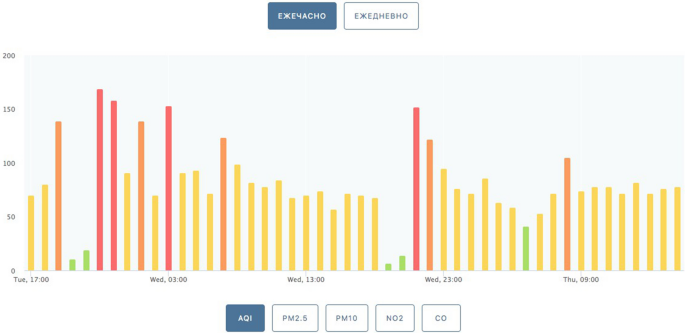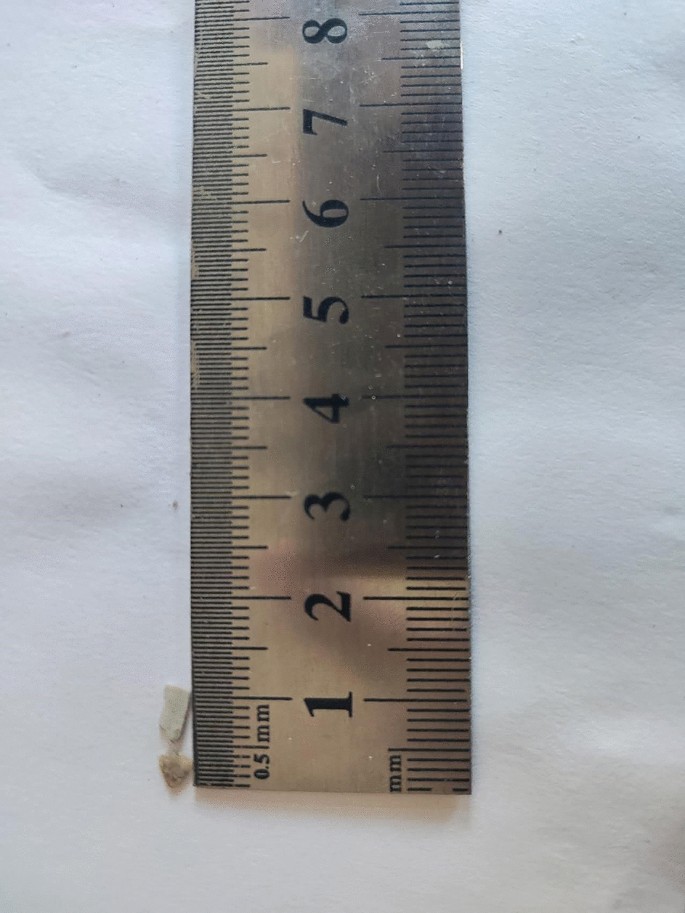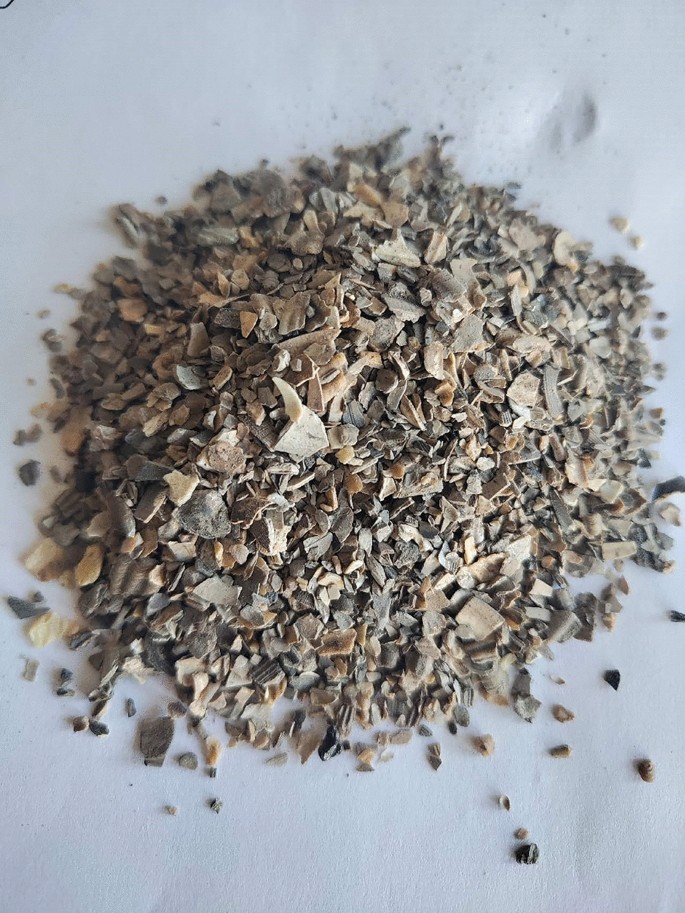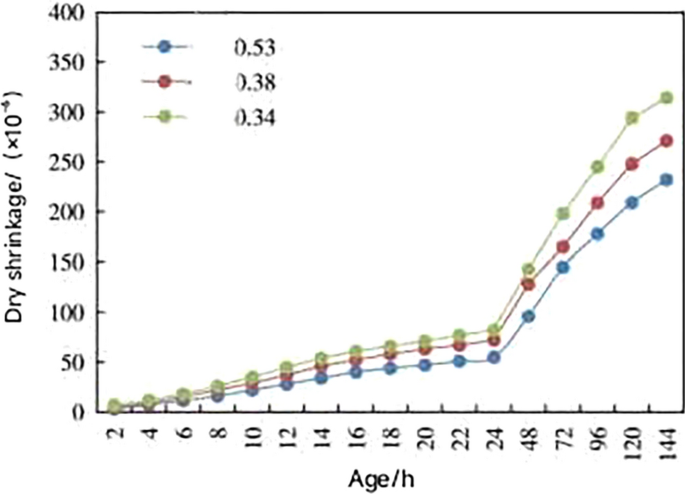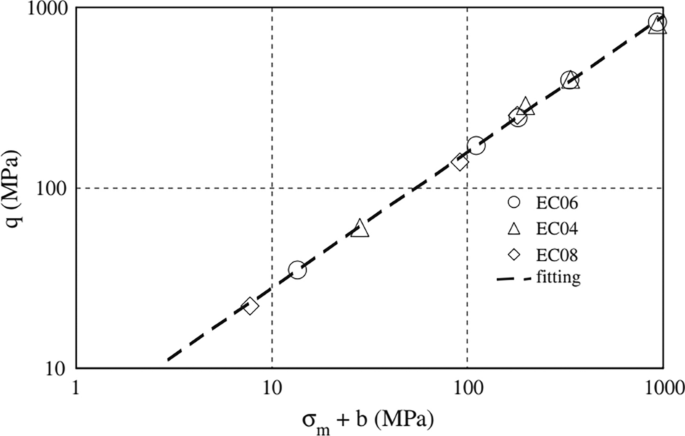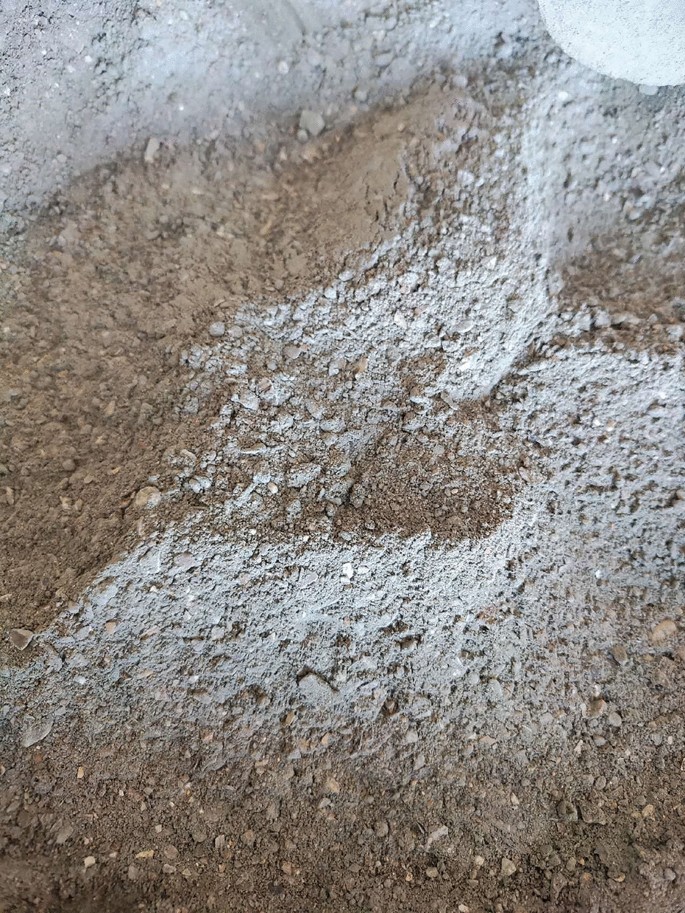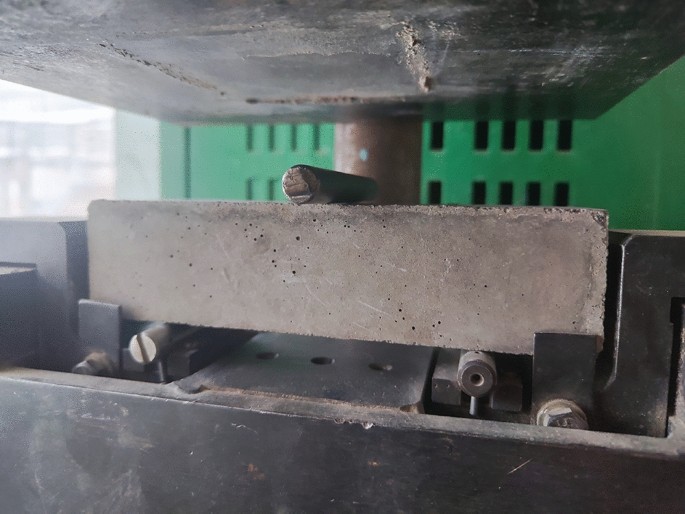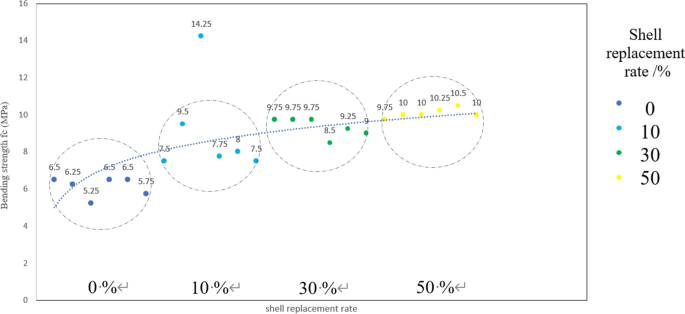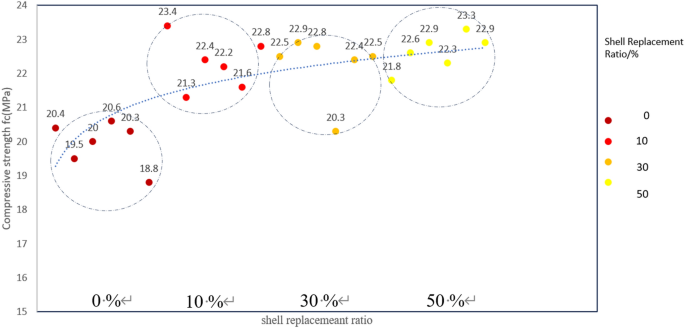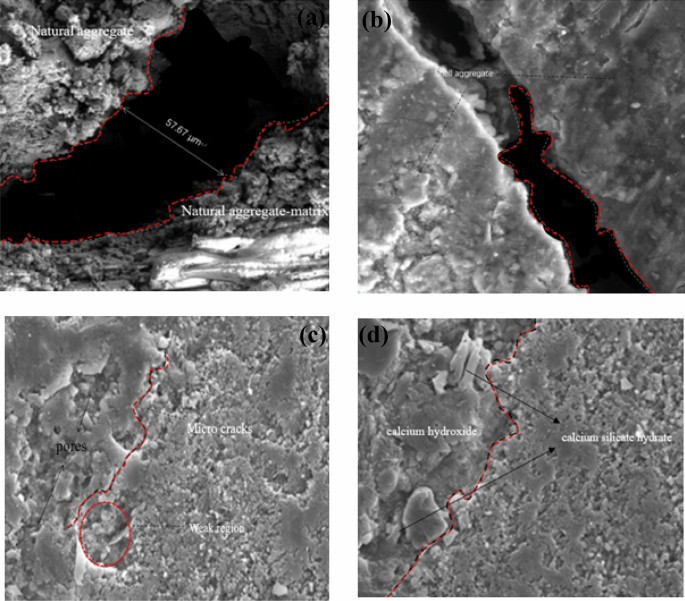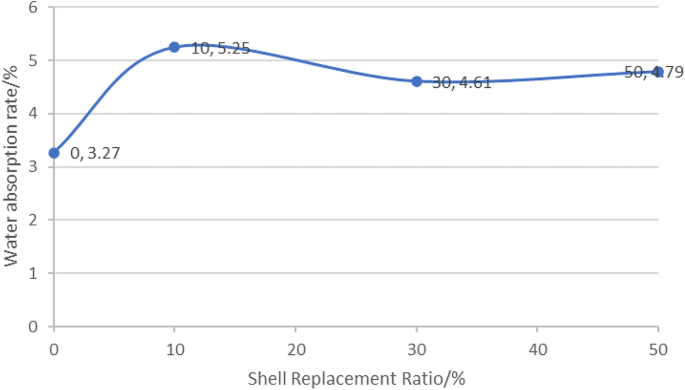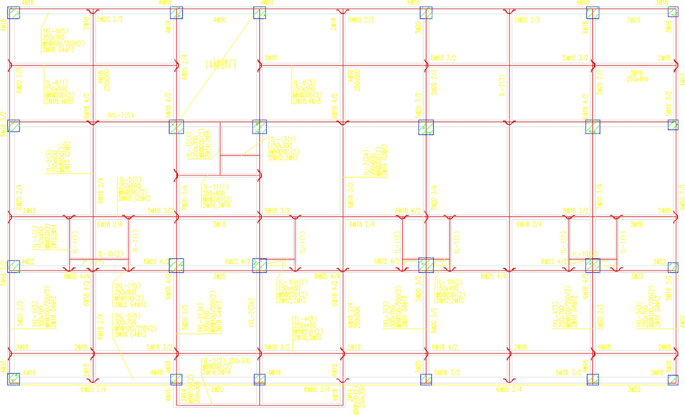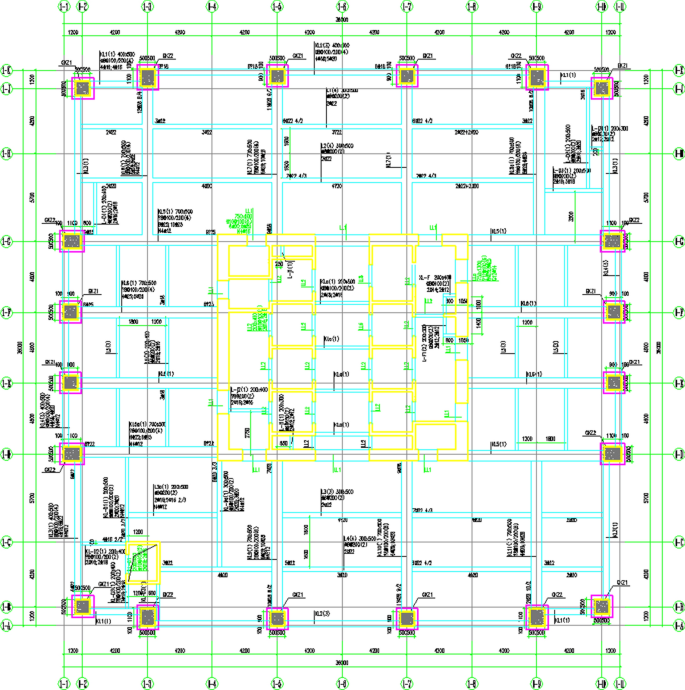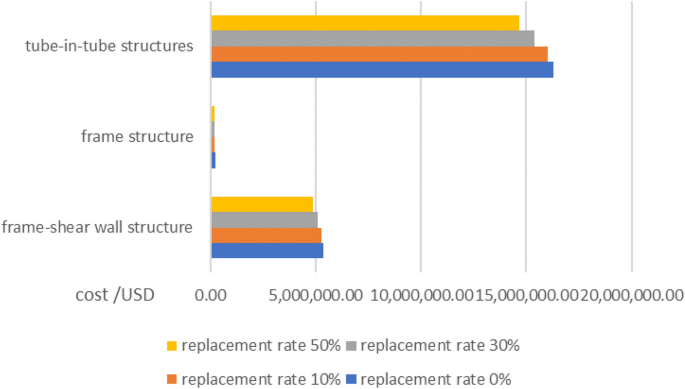Abstract
The recycling bio-waste shells problem has grown more and more serious in recent years and many efforts have been made to solve this problem. One possible solution is to put these bio-shells into concrete and recycle them as building materials using the aggregate matrix concrete approach. To verify the engineering feasibility, the mechanical properties of bio-shells aggregated concrete were invested via gradient substitution rates at 10%, 30%, and 50% with a total of 78 groups of specimens in this paper. Our results show that the mechanical properties of the concrete were enhanced in maximum flexural strength and maximum compressive. Economic performance was also analyzed and found that the costs of frame-shear structure, frame structure, and tube-in-tube structure were reduced by 10.2%, 10%, and 10.3%. The carbon environmental assessment also shows superiority in the carbon reduction of a single specimen with various rates of the shell. In summary, compared with ordinary concrete materials, it is very possible to use waste bio-shells as a substitute for aggregates to develop the sustainable recycling development of concrete materials.
Similar content being viewed by others
Introduction
In recent years, the treatment of garbage problems has become serious all over the world, large amounts of garbage have caused serious air pollution and ecological damage, as shown in Figs. 1 and 2. To solve this problem, separating useful material from waste and using it for developing new building materials is considered a clean and economical approach to solving the waste problem. Therefore, relevant classification and composition screenings of the collected waste are done in this paper and show that bio-shells, one of the kitchen waste, can be good choices for replacing traditional concrete aggregates. As reported by previous researchers, nearly 10 million metric tons of shells of oysters, clams, scallops, and mussels are discarded globally every year2. Furthermore, a comprehensive survey was carried out to assess the situation of restaurants in selected provinces of China and the Republic of Belarus, the collected data revealed that the Belarusian restaurant chain brand “Sea Food” alone generates amounting to over 100 catties of discarded seashells per day. Correspondingly, approximately 5 tons of seashells are discarded daily in the provinces of Guangdong and Fujian, China3.
Air quality indicators1.
To address the pollution problem, analyzing the chemical composition and potential use of shells as building materials is necessary. The literature results have shown that shells contain calcium carbonate, glycoprotein, proteoglycan, polysaccharide, and chitin. In the hydration process of cement, water reacts with four main clinker minerals. At room temperature, tricalcium silicate hydrates form calcium silicate hydrate (C–S–H gel) and calcium hydroxide, while dicalcium silicate (β-C2S) hydrates produce similar products. Tricalcium aluminate hydrates to form unstable calcium aluminate hydrate, which eventually transforms into hydrogarnet (C3AH6). The hydration reaction of iron phase solid solution (C4AF) is like that of tricalcium aluminate4. Observing this hydration reaction can lead to the conclusion that shells do not affect the hydration process of cement and thus do not cause damage to the structure and strength of concrete. Therefore, shells can be used as part of concrete aggregates to develop new building materials as a recycling solution.
In coastal regions, the primary source of construction sand is desalinated sea sand, containing typically a shell content of 5–8%. From research on mortar, the incorporation of shells in place of river sand has a notable influence on the overall compressive strength and dry shrinkage of cement-based materials, with an increase of 8% in the proportion of shells5. Yang et al., have focused on studying shell aggregates as an alternative to natural aggregates. They suggest that shell aggregates hold promising potential for practical applications, offering a favorable solution to the growing shortage of natural aggregate resources. Research from MO’s group asserts that there is a growing inclination towards sustainability in the field of concrete engineering, primarily driven by the depletion of materials traditionally employed in the production of natural concrete. It is suggested that utilizing shell waste in the production of concrete can enhance both its workability and strength, thereby offering a viable solution5. Kuo’s experiments proposed that replacing a portion of river sand with shells in cement can lead to an increase in the proportion of shells. This substitution has had a notable impact on the overall compressive strength and shrinkage of the base material6,7. Eziefula has found that shells can be used as a partial or total substitute for fine and coarse aggregates in concrete8.
Some scholars in China used shells as aggregates to test concrete and found that the compressive strength of concrete increased with the rise in shell replacement rate after 28 days9. Sergey’s study showed that shells improved the strength, strain, modulus, and microstructure of concrete. The new concrete also reduced the cost and defects of construction. This research has practical implications10. Belarus researchers tested to use of agricultural waste (e.g., rice husk ash, peanut shells, oak wood chips, coconut shells, and corn cobs) as aggregate substitutes. This can lower waste pollution to the environment and construction costs11,12. Many studies have tested shells in concrete. From those tests, shells have more advantages over other agricultural wastes as concrete aggregates. Martínez found that shells should not exceed 25% for fine aggregates and 12.5% for coarse aggregates to improve concrete strength13. Malaysian researchers have suggested that Calcined shells improve concrete strength and density. Future research should test different calcination levels and shell concrete durability14. In addition, the research of Iraqi scholars reveals that crushed walnut shells(similar to shells) are an agricultural waste material that can be used to produce environmental concrete that reduces the demand for natural aggregates and the environmental impact of concrete production15,16,17.
After a thorough review of the above studies, it can be concluded that shells possess exceptional mechanical properties18, a significant specific surface area, and a lower density compared to stone. As a building material, shells offer advantages like workability, strength, and reduced weight in concrete19. To prepare the shells, they should be soaked in a concentrated solution of NaCl and a diluted solution of 10% H2O220, after removing organisms and impurities, the material is crushed and screened to produce shells with a particle size of less than 0.5 mm. This not only helps save resources and energy but also reduces waste and decreases the consumption of natural aggregates21,22. As a result, it creates greater economic and social benefits7,9,23. Additionally, the study suggests that using the right amount of shell aggregate can enhance the strength of concrete, ensuring the safety and stability of structures while promoting sustainable development24.
Previous studies have shown that shells have adequate strength and some superior properties as aggregates13. However, there is no consensus on the best way to use shells in construction, and few practical examples exist. Herein, a research plan was proposed to test three levels of calcined shells (10%, 30%, and 50%) as aggregate replacements and compare their mechanical, economic, and environmental performance with conventional concrete. Our results confirmed that there’s an enhancement in maximum flexural strength and maximum compressive from these three-level shell aggregated concrete.
Experimental program
This experiment uses different proportions of shells as concrete aggregate and prepares cement mortar according to a certain mix ratio and curing conditions. Different test equipment and methods are performed to measure the compressive strength, flexural strength, and water absorption rate with the purpose of studying the effect of shell replacement of crushed stone on the performance of cement mortar.
Experimental materials and proportions
The performance of the shell
Shells are the hard protective coverings of various mollusks, such as oysters, clams, mussels, and scallops. They are composed mainly of calcium carbonate, also known as limestone, which is a common ingredient in cement19. Shells have a complex hierarchical structure, consisting of different layers of organic and inorganic materials, arranged in various patterns and orientations. This gives them high strength and toughness, as well as resistance to fracture and damage25.
The properties of seashell concrete depend on several factors, such as the type, size, shape, and proportion of seashells, as well as the curing conditions, admixtures, and chemical treatments. Some of the effects of seashells on concrete are:
Setting time: Seashells can increase the setting time of concrete, due to their alkaline nature and water absorption capacity25,26.
Workability: Seashells can decrease the workability of concrete, due to their irregular shape and rough surface25.
Density: Seashells can increase the density of concrete, due to their higher specific gravity than cement or sand25,26.
Compressive strength: Seashells can decrease the compressive strength of concrete, due to their lower bonding strength with cement paste and higher porosity 234. However, adding admixtures or applying chemical treatments can improve the compressive strength of seashell concrete26,27.
Tensile strength: Seashells can increase the tensile strength of concrete, due to their fibrous structure and crack-bridging effect13,25.
Flexural strength: Seashells can increase the flexural strength of concrete, due to their higher modulus of elasticity and toughness26.
Modulus of elasticity: Seashells can decrease the modulus of elasticity of concrete, due to their lower stiffness and higher deformation27.
Experimental materials
Cement: P·O R45 cement, the main chemical composition is presented in Table 1, while the physical and mechanical properties are displayed in Table 2, which complies with the requirements of EN 197-1 for chemical composition, strength, setting time, soundness, and fineness.
Water: ordinary tap water.
Sand: natural river sand, in line with the construction sand standard, the bulk density is less than 1.5 g/m3, the fineness modulus is 1.9, and the moisture content is less than 1%.
Stone: fine stone meets the requirements of EN 12620 for geometrical and physical properties, the bulk density is not less than 2.6 g/m3, and the particle size is 5–7 mm.
Shell: According to the European Standards (EN-12620), the aggregates used in the production of concrete are inert granular materials such as gravel, crushed stone, sand, slag, recycled concrete, and geosynthetic aggregates. The aggregates may be natural, manufactured, or recycled, hence, the substitution of shells for aggregate meets the standards. After calcination and crushing, the particle size is less than 0.5 mm, the bulk density is less than 2.9 g/m3, the fineness modulus is 2.9, and the moisture content is less than 1%, refer to Figs. 3 and 4 for details.
The compressive strength of the concrete samples was tested at 7 days and 28 days after casting, according to EN 12390-3. The average compressive strength at 7 days was 25 MPa, 35 MPa on 28 days, which met the design requirement of 30 MPa for the structural elements.
The slump test was performed on the fresh concrete mix, according to EN 12350-2. The slump value was 75 mm, which indicated a medium workability of the concrete, suitable for the casting and compaction methods used in this project.
Material ratio and specimen design
According to the study’s conclusions and curve analysis, it is believed that, as the water-binder ratio increases, the impact of coarse aggregate becomes more pronounced, resulting in lower dry shrinkage28, referring to Fig. 5. Previous studies also show an increasing the water-cement ratio results in higher porosity and lower strength of the concrete29. After analyzing Figs. 5 and 6, and considering EU standard EN 206+A2 and Chinese standard GB 50010-2010, the water-cement ratio in the range of 0.45–0.6 is relatively appropriate30, to ensure sufficient strength and reduce porosity, it is necessary to choose a smaller water-cement ratio31. So our team take a water-cement ratio of 0.5 as optimal for ensuring the strength and preventing cracking of the concrete in the experiment31,32.
Dry shrinkage curves of concrete under different water cement ratios9.
Water cement ratio and strength relationship curve29.
In this test, shells and other materials were used as a substitute for natural stone. The mix ratio (kg/m3) of the cement mortar in the benchmark group was as follows: m (cement): m (sand): m (stone): m (water) = 500: 600: 900: 250, the mix ratio (kg/m3) of the cement mortar in the 10% shell replacement rate was as follows: m (cement): m (sand): m (stone) : m(shell): m (water) = 500: 600: 810:90: 250, the mix ratio (kg/m3) of the cement mortar in the 30% shell replacement rate was as follows: m (cement): m (sand): m (stone) : m(shell): m (water) = 500: 600: 530: 270: 250, the mix ratio (kg/m3) of the cement mortar in the 50% shell replacement rate was as follows: m (cement): m (sand): m (stone) : m(shell): m (water) = 500: 600: 450: 450: 250. All the mixes conform to standard EN 206-1, the mixture is shown in Fig. 7. Additionally, the superplasticizer content was 0.2% of the cement mass. The gravel is replaced based on shell gradients of 10%, 30%, and 50%. The mixture was evenly stirred and poured into a mold with dimensions of 400 mm × 400 mm × 1600 mm, the test prisms is shown in Fig. 8, following standard EN 12,390–5:2009. Thirteen specimens are cast for each different gradient, 39 specimens in total for bending experiments. The specimens for compressive experiments are 100 mm × 100 mm × 100 mm, following the standard EN 12390-3:2019, with 13 specimens cast at each gradient, 39 specimens in all. After segmental vibration compaction, the specimens were hardened at 23 °C, molded after 7 days, and cured at 20 °C with a relative humidity of 95% until the specified age33.
Experimental procedure
After curing for 28 days, the specimen underwent a test using the DS2-1000N compressive strength tester for axial compressive resistance and three-point bending. The “Hydraulic Pressure Testing Machine-GB/T3722” was used to conduct a uniaxial compressive test on the specimen, aligning the axis with the pressure center of the testing machine's pressure plate. The load was applied at a speed of 10–30 kN/s until the specimen failed, and the failure load was recorded to determine the compressive and flexural strengths33. The test block was soaked in water for 2 days, taken out to dry completely, recorded the weight before and after. The water absorption rate was calculated to evaluate the frost resistance strength.
Experimental results and analysis
Flexural strength
The failure load of the specimen was obtained through a three-point bending test, testing followed the third-point loading because it is simpler to perform and analyze than the fourth-point loading34. This testing was following the standard ASTM C78/C78M and the flexural strength is presented in Table 3, and the flexural strength ff (MPa) of the specimen is calculated according to the formula \({\varvec{f}}_{{\varvec{f}}} = \frac{{{\varvec{Fl}}}}{{{\varvec{bh}}^{2} }}\), the testing is shown in Fig. 9, where ff is the concrete flexural strength (MPa), F is the failure load of the specimen (N), L is the span between the supports (mm), and b is the cross-sectional width of the specimen (mm), h is the cross-sectional height of the specimen (mm); the scatter plot distribution of flexural strength is shown in Fig. 10.
Compressive strength
Throughout the uniaxial compressive test, the uniaxial compressive failure load of the specimen is determined, and the compressive strength \({\varvec{f}}_{{\varvec{c}}}\) (MPa) of the test cube can be calculated according to the formula \({\varvec{f}}_{{\varvec{c}}} = {\varvec{F}}/{\varvec{A}}\), where \({\varvec{f}}_{{\varvec{c}}}\) is the compressive strength, F is the failure load, and A is the bearing area. Intensity data is presented in Table 4. The scatter plot distribution of compressive strength is shown in Figs. 11. The damage situation is depicted in Fig. 12.
Microstructure analysis
To carry out a more comprehensive analysis of the impact of shell aggregates on the mechanical properties of concrete at a microscopic level, scanning electron microscopy (SEM) was performed on shell aggregates with varying replacement rates (0%, 10%, 30%, and 50%). This allowed us to observe the surface structure of the concrete under different shell replacement conditions. Figure 13a depicts concrete without shell aggregate, and Fig. 13b illustrates concrete with a 10% shell aggregate. In Fig. 13c, concrete with a 30% shell aggregate is shown, and Fig. 13d displays concrete with a 50% shell replacement rate. Comparing these images, it is evident that the inclusion of shell aggregate in concrete enhances the compactness of the joints between concrete structures, resulting in improved stress performance and a reduced risk of compressive cracking. The overall working performance of the concrete is enhanced.
Waters absorption ratio
After measuring the mass of the samples before and after, the water absorption rate can be calculated by the formula \({\varvec{W}} = \left( {{\varvec{B}} - {\varvec{G}}} \right)/{\varvec{G}} \times 100\user2{\% }\), G is the weight of the sample after drying, B is the weight of the sample saturated with water, the testing method was according to EN 12390-8:2009, and the data is presented in Table 5. The curve depicting the change in water absorption is shown in Fig. 14.
Prediction of the mechanical strengths
Based on the analysis of the data obtained from the three-point flexural test (Table 3), the following conclusions can be drawn:
-
When the shell replacement rate is 10%, the flexural strength of the specimen increases by 31.4% and 1.925 MPa compared to the benchmark group.
-
When the shell replacement rate is 30%, the flexural strength of the specimen increases by 52.4% and 3.208 MPa compared to the benchmark group.
-
The flexural strength of the specimen increases by 64.6% and 3.958 MPa, respectively, when the shell replacement rate is 50%.
According to the mechanical curve shown in Fig. 10, it is evident that the addition of the shell significantly enhances the flexural strength of the prism when compared to traditional aggregate. This indicates that the inclusion of shell aggregate reduces the concrete's susceptibility to bending and fracturing. Consistent with the experimental phenomenon, previous research has shown that the addition of shells improves post-cracking behavior, reduces the opening of cracks, and counteracts their expansion, as well as increases the toughness of concrete owing to their deboning and internal stress mechanisms35,36. Furthermore, due to the adsorption capacity of shells37, if the shell is aligned with the tensile direction, it is capable of bearing the tensile force and impeding crack propagation38. Therefore, the shells with higher content have a wider and more uniform distribution in the concrete, as the cement does not have a significant effect on the shells during the hydration process, and no settlement or floating occurs, which also improves the tensile strength of the concrete. These findings are supported by the available data, when the shell replacement rates were 10%, 20%, and 30% respectively, the mixing ratio increased by 10% each time, and the 90 d tensile strength of the concrete with traditional aggregate increased by 11.8%, 15.1%, and 17.6% respectively6,8,25,35.
In the uniaxial compressive test (Table 4), it was observed that the compressive strength of the specimen increased by 10.7% and 2.727 MPa when the shell replacement rate was 10% compared to the benchmark group. Similarly, when the shell replacement rate was 30%, the compressive strength of the specimen increased by 16.6% and 3.207 MPa compared to the benchmark group. The compressive strength of the specimen increased by 17.8% and 3.442 MPa compared to the benchmark group when the shell replacement rate was 50%. The curve depicted in Fig. 11 shows that the inclusion of shell aggregates leads to a significant enhancement in compressive strength. This observation suggests that the addition of shell aggregates improves the concrete's resistance to compression-induced damage and enhances its load-bearing capacity. Upon comparing the curves depicted in the Figs. 10 and 11, it is evident that the curve exhibits a rapid rise in the range of 0–30% replacement rate. However, the rate of increase slows down between 30 and 50% and eventually reaches a plateau when it approaches 50%. This observation suggests that shells can be substituted at a rate as high as 50% while still providing satisfactory strength as aggregates.
Figure 13 presents scanning electron microscope (SEM) images of shell concrete at a 28-day scale, depicting various shell aggregates with distinct gradients in intensity. Based on the captured images of moral onlookers, a further analysis was conducted on the impact of shell aggregates on the mechanical properties of natural aggregates. It can be observed from the SEM diagram of the failed samples that the cracking in the shell aggregate concrete with 0% content is more pronounced and the spacing between cracks is larger. In contrast, the shell aggregate concrete with 10% content exhibits significantly smaller fracture spacing compared to the 0% content. Moreover, the shell aggregate concrete with 30% and 50% content only shows a limited number of microcracks and pores, which can be considered mechanically weak areas. Hence, it has been demonstrated that incorporating crushed shells into concrete under identical pressure conditions can effectively enhance the mechanical properties of the concrete. Further examination of Fig. 13b–d reveals that the concrete structure exhibits a high level of compactness, with no presence of a cementitious porous structure. This observation effectively demonstrates the favorable workability of the concrete material when shell aggregate is added as a composite material. Additionally, the shell aggregate is capable of forming a dense matrix structure with the natural aggregate, resulting in strong compactness and low porosity. This further enhances the bonding between the cement slurry and the aggregate matrix. Therefore, the incorporation of shell aggregate as a partial replacement for natural aggregate has been found to enhance the mechanical properties of concrete significantly.
Cong proposed that there was a positive correlation between the moisture content of concrete and its higher frost resistance39. Therefore, it is hypothesized that the frost resistance of the test block may be influenced by its water absorption capacity, it can be considered that the lower the water absorption rate, the more favorable the frost resistance of the material40. It is expected that a lower water absorption rate would result in lower moisture content within the test block, thereby enhancing its frost resistance41. Based on the analysis of the curves presented in Table 5 and Fig. 8, it can be inferred that the replacement of traditional aggregate with shell leads to a slight increase in the moisture content of the test block. It can be concluded that the frost resistance of the shell aggregate is poor. With the gradual increase in the replacement rate of aggregate, there is minimal fluctuation in the moisture content. It can be inferred that while the replacement rate of shell aggregate may decrease the frost resistance, varying replacement rates have a negligible impact on the frost resistance of concrete.
Furthermore, in the process of the experiment, it was observed that the application of mechanical vibration in the concrete exhibited a flow-like behavior, allowing it to fill the formwork evenly and densely. The destruction section displayed a uniform distribution of shells, with no instances of delamination or segregation. Additionally, it was noted that there were no significant issues with water leakage during the curing process. It can be inferred that the use of shells as aggregates exhibits favorable workability and integrity.
Life cycle assessment
Economical assessment
The researchers believe that in the process of studying the replacement of traditional aggregates by shells, to explore the application of aggregates in actual production, it is very important to analyze its economic performance. Take the China Construction Project Budget Quota to calculate the cost of concrete: 180 yuan/m3 for sand, 4.1 yuan/m3 for commercial water, 635 yuan/ton for cement, 220 yuan/m3 for stone, one cubic meter of concrete weighs 2400 kg. The cost of commercial concrete is 635 yuan/m342. In addition, the researchers investigated the garbage recycling plant and recycled the waste shells, found that the waste shells were biological waste, and the recycling plant believes that they do not have recycling value, so they can be obtained free of charge, and only need to issue relevant labor costs, and the cost of shells can be calculated according to the labor cost of 10 yuan per m343.
Economic performance analysis of buildings using frame shear structure
Here, a significant high-rise building project covering a total area of 173,256.37 m2 in the East of China is taken as a sample. The structure of the building is depicted in Fig. 15. To assess the economic viability of shell aggregates, all concrete materials were substituted with 50% shell aggregate concrete. Upon comparison with traditional aggregates, it was found that the total concrete consumption amounted to 82,226.37 m3. Full analysis details are given in Appendix 1.
Analysis of the economic performance of buildings using frame Structures
A nine-story frame structure in southern China serves as a sample with a total area of 12,055.52 m2 (Fig. 16) to assess the economic performance of shell aggregates. An analysis was carried out by replacing all concrete with 50% shell aggregate concrete compared to traditional aggregates. The total concrete consumption for this structure amounted to 3389.92 m3. Full analysis details are given in Appendix 2.
Analysis of the economic performance of the building using the tube in the tube
A building with a tube structure in southern China was put as a sample, as depicted in Fig. 17, which has a total area of 341,376.54 m2. To evaluate the economic performance of shell aggregate, an analysis is based on replacing all concrete with 50% shell aggregate concrete. The total volume of concrete used in this structure was 263,124.38 m3. Full analysis details are given in Appendix 3.
Compare the cost of replacing traditional aggregates with shells in three building structures (Fig. 18), the researchers calculated that the concrete costs of the frame-shear structure, frame structure, and tube-in-tube structure are reduced by 10.2%, 10%, and 10.3% respectively. This suggests that shell aggregate can effectively reduce building costs.
Environmental assessment
To assess the environmental impact of shell aggregates, it is important to consider carbon emissions. This includes the carbon emissions from the production of raw materials (C1a), which refers to the CO2 generated during the production and processing of raw materials. This includes energy consumption and carbon emissions from the material processing itself. The calculation formula for C1a is as follows:\({\varvec{C}}_{{1{\varvec{a}}}} = \mathop \sum \limits_{{\varvec{i}}} \left( {\mathop \sum \limits_{{\varvec{j}}} {\varvec{a}}_{{{\varvec{ij}}}} {\varvec{K}}_{{\varvec{j}}} } \right){\varvec{m}}_{{\varvec{j}}} + {\varvec{g}}_{1} {\varvec{m}}_{1}\). In the formula, \({\varvec{a}}_{{{\varvec{ij}}}}\) represents the energy consumption of j in the production process of i raw materials. \({\varvec{m}}_{{\varvec{j}}}\) represents the amount of class I raw materials used in 1 m3 of recycled concrete. \({\varvec{K}}_{{\varvec{j}}}\). is the carbon emission coefficient of class J energy, which is the sum of the direct carbon emission coefficient \({\varvec{K}}_{{\varvec{j}}}\). and the indirect carbon emission coefficient \({\varvec{K}}_{{\varvec{j}}}\). \({\varvec{g}}_{1}\) represents the carbon emission generated by the material itself in the process of cement production, m1 represents the ount of cement in 1 m3 of recycled concrete44. The study will utilize the mixture ratio of experimental test blocks to calculate parameters for carbon emissions. The calculation parameters for carbon emissions are presented in Table 6, while Table 7 displays the carbon emissions resulting from energy consumption. Full analysis details are given in Appendix 4.
The carbon emission curve of concrete at different shell replacement rates suggests that incorporating shells, as shown in Fig. 19, can effectively reduce carbon emissions. This reduces energy consumption and minimizes the environmental impact of buildings, protecting the ecological environment46.
Conclusion
To solve the bio-waste recycling problem, the aggregate approach method is proposed and tested on the mechanical properties of the concrete specimens with 10%, 30%, and 50% crushed bio-shell as a replacement aggregate. Three different types of buildings are calculated the concrete cost as an example and the carbon environmental impact of the specimens is evaluated using a carbon environmental protection formula.
Our result has shown that the substitution rate of shell can reach up to 50%, and the higher the substitution rate within this range, the greater the enhancement in concrete strength. The maximum increase in flexural strength can reach 3.96 MPa, and the highest increase in compressive strength can reach 2.5 MPa. Calculation of the project’s actual content found that using shell aggregate concrete can reduce material costs by approximately 10% for various structural projects. This significantly addresses the issue of excessive project costs. Utilizing a formula focused on carbon environmental protection, it has been determined that shell aggregate demonstrates notable environmental benefits. Moreover, this method significantly reduces kitchen waste, lowers energy usage, curtails the ecological footprint of carbon dioxide emissions, improves the overall ecosystem, and consequently delivers substantial societal advantages.
Overall, this work proves that aggregate concrete matrix can be a good method to reduce the waste of biohazards. A few questions can be raised from data analysis like if we can optimize the structure of the concrete or if we can find a better mix ratio when adding more types of bio-waste. Future research ideas will based on these unanswered questions.
Data availability
Data is provided within the manuscript or supplementary information files.
References
Mapия Heмцeвa. Boздyx в Oчaкoвe вce eщe тoкcичeн. Кaк дeпyтaты Mocгopдyмы бyдyт бopoтьcя co cвaлкaми и нeзaкoнным cжигaниeм мycopa.daily storm. https://dailystorm.ru/obschestvo/vozduh-v-ochakove-vse-eshche-toksichen-kak-deputaty-mosgordumy-budut-borotsya-so-svalkami-i-nezakonnym-szhiganiem-musora (2019).
Topić-Popović, N. et al. Shell waste management and utilization: Mitigating organic pollution and enhancing sustainability. Appl. Sci. 13(1), 623. https://doi.org/10.3390/app13010623 (2023).
FAO. World Fisheries and Aquaculture Status, Rome, Italy (2014). https://www.fao.org/3/i3720c/i3720c.pdf.
Scrivener, K. et al. Advances in understanding cement hydration mechanisms. Cem. Concr. Res. 124, 105823. https://doi.org/10.1016/j.cemconres.2019.105823 (2019).
Miah, M. J. et al. Effect of different fibers on mechanical properties and dry shrinkage properties of shell mortar. Constr. Build. Mater. 363, 129688 (2021).
Mo, K. H. et al. Recycling of seashell waste in concrete: A review. Constr. Build. Mater. 162, 751–764. https://doi.org/10.1016/j.conbuildmat.2017.12.009 (2018).
Kuo, W. T. et al. Engineering properties of controlled low-strength materials containing waste oyster shells. Constr. Build. Mater. 46, 128–133. https://doi.org/10.1016/j.conbuildmat.2013.04.020 (2013).
Eziefula, U. G., Ezeh, J. C. & Eziefula, B. I. Properties of seashell aggregate concrete: A review. Constr. Build. Mater. 192, 287–300. https://doi.org/10.1016/j.conbuildmat.2018.10.096 (2018).
Hailong, He. Analysis of the influence of sand and stone rockiness on the anti permeability and dry shrinkage performance of concrete. Municipal Technol. 41(7), 110–115 (2023).
Stelmakh, S. A. et al. Composition, technological, and microstructural aspects of concrete modified with finely ground mussel shell powder. Materials 16(1), 82. https://doi.org/10.3390/ma16010082 (2022).
Wei, M., Kovshar, S. N. & Leonovich, S. N. Effect of fiber type and volume fraction on the mechanical properties of structural concrete (2023). https://doi.org/10.21203/rs.3.rs-2544121/v1.
Sokolova, L. N. S., Ermakova, E. V. & Rynkovskaya, M. A review of agro-waste materials as partial replacement of fine aggregate in concrete. IOP Conf. Ser.: Mater. Sci. Eng. 371(1), 012012. https://doi.org/10.1088/1757-899X/371/1/012012 (2018).
Martínez-García, C. et al. Performance of mussel shell as aggregate in plain concrete. Constr. Build. Mater. 139, 570–583. https://doi.org/10.1016/j.conbuildmat.2016.09.091 (2017).
Kassim, U. & Ong, B. P. Performance of concrete incorporating of clam shell as partially replacement of ordinary Portland cement (OPC). J. Adv. Res. Appl. Mech. 55(1), 12–21 (2019).
Hilal, N., Taghreed, K. M. A. & Bassam, A. T. Properties of environmental concrete that contains crushed walnut shell as partial replacement for aggregates. Arab. J. Geosci. 13, 1–9. https://doi.org/10.1007/s12517-020-05733-9 (2020).
Mohammed, A. S. et al. An investigation of the effect of walnut shell as sand replacement on the performance of cement mortar subjected to elevated temperatures. J. Phys. Conf. Ser. 1973, 1. https://doi.org/10.1088/1742-6596/1973/1/012034 (2021).
Hilal, N. N., Mohammed, F. S. & Taghreed, K. M. A. Fresh and hardened properties of lightweight self-compacting concrete containing walnut shells as coarse aggregate. J. King Saud Univ.-Eng. Sci. 33(5), 364–372. https://doi.org/10.1016/j.jksues.2020.01.002 (2021).
Fakayode, O. A. Size-based physical properties of hard-shell clam (Mercenaria mercenaria) shell relevant to the design of mechanical processing equipment. Aquac. Eng. 89, 102056. https://doi.org/10.1016/j.aquaeng.2020.102056 (2020).
Tayeh, B. A. et al. Durability and mechanical properties of seashell partially-replaced cement. J. Build. Eng. 31, 101328. https://doi.org/10.1016/j.jobe.2020.101328 (2020).
Hui, Z. H. A. O. et al. Research progress on recycling technology of waste shells. J. Jinling Univ. Sci. Technol. 35(1), 34–39 (2019).
Martínez-García, C. et al. Mussel shell mortars durability: Study of aggregate replacement limit. J. Build. Eng. 82, 108239. https://doi.org/10.1016/j.jobe.2023.108239 (2024).
Sabău, M., Dan, V. B. & Luis, F. O. S. Comparative carbon emission assessments of recycled and natural aggregate concrete: Environmental influence of cement content. Geosci. Front. 12(6), 101235. https://doi.org/10.1016/j.gsf.2021.101235 (2021).
Darko, A. et al. A scientometric analysis and visualization of global green building research. Build. Env. 149, 501–511. https://doi.org/10.1016/j.buildenv.2018.12.059 (2019).
Rachmawati, S., Siti, H., Zakaria, H. & Jim, S. Shear strength of soil by using clam shell waste as recycle aggregate. J. Agric. Eng. 51(3), 155–160. https://doi.org/10.4081/jae.2020.1043 (2020).
Hasan, K. et al. A review of the mechanical properties and durability of concrete containing recycled seashells as a partial cement replacement. J. Mater. Cycles Waste Manage. 25(6), 3192–3216. https://doi.org/10.1007/s10163-023-01795-5 (2023).
Maglad, A. M. et al. Assessing the mechanical, durability, thermal and microstructural properties of sea shell ash based lightweight foamed concrete. Constr. Build. Mater. 402, 133018. https://doi.org/10.1016/j.conbuildmat.2023.133018 (2023).
Elliott Richardson, A. & Fuller, T. Sea shells used as partial aggregate replacement in concrete. Struct. Surv. 31(5), 347–354. https://doi.org/10.1108/SS-12-2012-0041 (2013).
Shen, W. et al. Influence of manufactured sand’s characteristics on its concrete performance. Constr. Build. Mater. 172, 574–583. https://doi.org/10.1016/j.conbuildmat.2018.03.139 (2018).
Vu, X. H. et al. Effect of the water/cement ratio on concrete behavior under extreme loading. Int. J. Numer. Anal. Meth. Geomech. 33(17), 1867–1888. https://doi.org/10.1002/nag.796 (2009).
Wang, X., Saifullah, H. A., Nishikawa, H. & Nakarai, K. Effect of water–cement ratio, aggregate type, and curing temperature on the fracture energy of concrete. Constr. Build. Mater. 259, 119646 (2020).
Wang, F., Li, K. & Liu, Y. Optimal water-cement ratio of cement-stabilized soil. Constr. Build. Mater. 320, 126211. https://doi.org/10.1016/j.conbuildmat.2021.126211 (2022).
Li, X. et al. Effect of water-cement ratio and size on tensile damage in hardened cement paste: Insight from peridynamic simulations. Constr. Build. Mater. 356, 129256. https://doi.org/10.1016/j.conbuildmat.2022.129256 (2022).
Li, B. et al. Effect of recycled aggregate and steel fiber contents on the mechanical properties and sustainability aspects of alkali-activated slag-based concrete. J. Build. Eng. 66, 105939. https://doi.org/10.1016/j.jobe.2023.105939 (2023).
Farrokhabadi, A. et al. Experimental and numerical analysis of novel multi-layer sandwich panels under three point bending load. Compos. Struct. 250, 112631. https://doi.org/10.1016/j.compstruct.2020.112631 (2020).
Yuan, Q. et al. New insight into the toughening mechanisms of seashell: From arch shape to multilayer structure. J. Nanomater. 2016, 785. https://doi.org/10.1155/2016/3817985 (2016).
Carberry, D. Mechanics of Seashell Growth: Examining the relationship between incompatibility, shape, and internal stress. In Massachusetts Institute of Technology (2023). https://hdl.handle.net/1721.1/151869.
Li, T. et al. Research progress on the applications of seashell adsorption behaviors in cement-based materials. Buildings 13(5), 1289. https://doi.org/10.3390/buildings13051289 (2023).
Sun, L. et al. Mix design optimization of seawater sea sand coral aggregate concrete. Sci. China Technol. Sci. 66(2), 378–389. https://doi.org/10.1007/s11431-022-2242-3 (2023).
Cong, X. et al. Water absorptivity and frost resistance performance of self-ignition coal gangue autoclaved aerated concrete. J. Infrastruct. Preserv. Resilience 2(1), 1–10. https://doi.org/10.1186/s43065-021-00031-4 (2021).
Li, Y. et al. Influence of aeolian sand on capillary water absorption of concrete under freeze-thaw conditions. Int. J. Concrete Struct. Mater. 17(1), 16. https://doi.org/10.1186/s40069-022-00577-x (2023).
Zhao, H. et al. Experimental analysis on the relationship between pore structure and capillary water absorption characteristics of cement-based materials. Struct. Concrete 20(5), 1750–1762. https://doi.org/10.1002/suco.201900184 (2019).
GB50500-2013 Specifications for Valuation of Bill of Quantities for Construction Projects (2023).
Zhang, C., Ma, B. & Du, Q. Public acceptability and its determinants of unit pricing for municipal solid waste disposal: Evidence from a household survey in Beijing. J. Environ. Manage. 346, 118966. https://doi.org/10.1016/j.jenvman.2023.118966 (2023).
Xiao, J., Li, W. & Ding, T. Life cycle CO2 emission evaluation of recycled concrete. J. Southeast Univ. Nat. Sci. Ed. 46(5), 1088–1092. https://doi.org/10.3969/j.issn.1001-0505.2016.05.032 (2016).
Adesina, A. Recent advances in the concrete industry to reduce its carbon dioxide emissions. Environ. Challenges 1, 100004. https://doi.org/10.1016/j.envc.2020.100004 (2020).
Nie, H., Wang, L. & Tian, M. Analysis on determinants of carbon emissions from plaza ground paving during the construction stage based on life cycle assessment. Sci. Rep. 14, 136. https://doi.org/10.1038/s41598-023-47933-9 (2024).
Acknowledgements
The first corresponding author, Ph.D student Xianpeng Wang, thanked the China Scholarship Council for the self-help in life.
Author information
Authors and Affiliations
Contributions
Xianpeng Wang: experiment, investigation, data management, methodology, formal analysis, conceptualization, writing-original draft, project administration. Haoxuan Yu: experimentation, investigation, data validation, writing, review and editing. Fulong Li : Professor Li helped with the revision comments of the peer reviewers, reviewed the final version, and provided a lot of support for subsequent research materials. Kovshar Sergey Nikolayevich: provide experimental materials, provide experimental help, review the final manuscript and edit comments, and supervise the entire experimental process. Haojue Yu, My colleague Yu Haojue has excellent English proficiency and has rigorously proofread the English grammar and civil engineering English vocabulary of the full text. Leonovich Sergey Nikolaevich: review, comment and edit, supervise, and verify data. Wenbing F:He made detailed revisions to the abstract and conclusion sections and provided great help in solving the reviewers' questions.
Corresponding authors
Ethics declarations
Competing interests
The authors declare no competing interests.
Additional information
Publisher's note
Springer Nature remains neutral with regard to jurisdictional claims in published maps and institutional affiliations.
Rights and permissions
Open Access This article is licensed under a Creative Commons Attribution 4.0 International License, which permits use, sharing, adaptation, distribution and reproduction in any medium or format, as long as you give appropriate credit to the original author(s) and the source, provide a link to the Creative Commons licence, and indicate if changes were made. The images or other third party material in this article are included in the article's Creative Commons licence, unless indicated otherwise in a credit line to the material. If material is not included in the article's Creative Commons licence and your intended use is not permitted by statutory regulation or exceeds the permitted use, you will need to obtain permission directly from the copyright holder. To view a copy of this licence, visit http://creativecommons.org/licenses/by/4.0/.
About this article
Cite this article
Wang, X., Yu, H., Li, F. et al. Effect of biological shells aggregate on the mechanical properties and sustainability of concrete. Sci Rep 14, 10615 (2024). https://doi.org/10.1038/s41598-024-61301-1
Received:
Accepted:
Published:
DOI: https://doi.org/10.1038/s41598-024-61301-1
Keywords
Comments
By submitting a comment you agree to abide by our Terms and Community Guidelines. If you find something abusive or that does not comply with our terms or guidelines please flag it as inappropriate.




